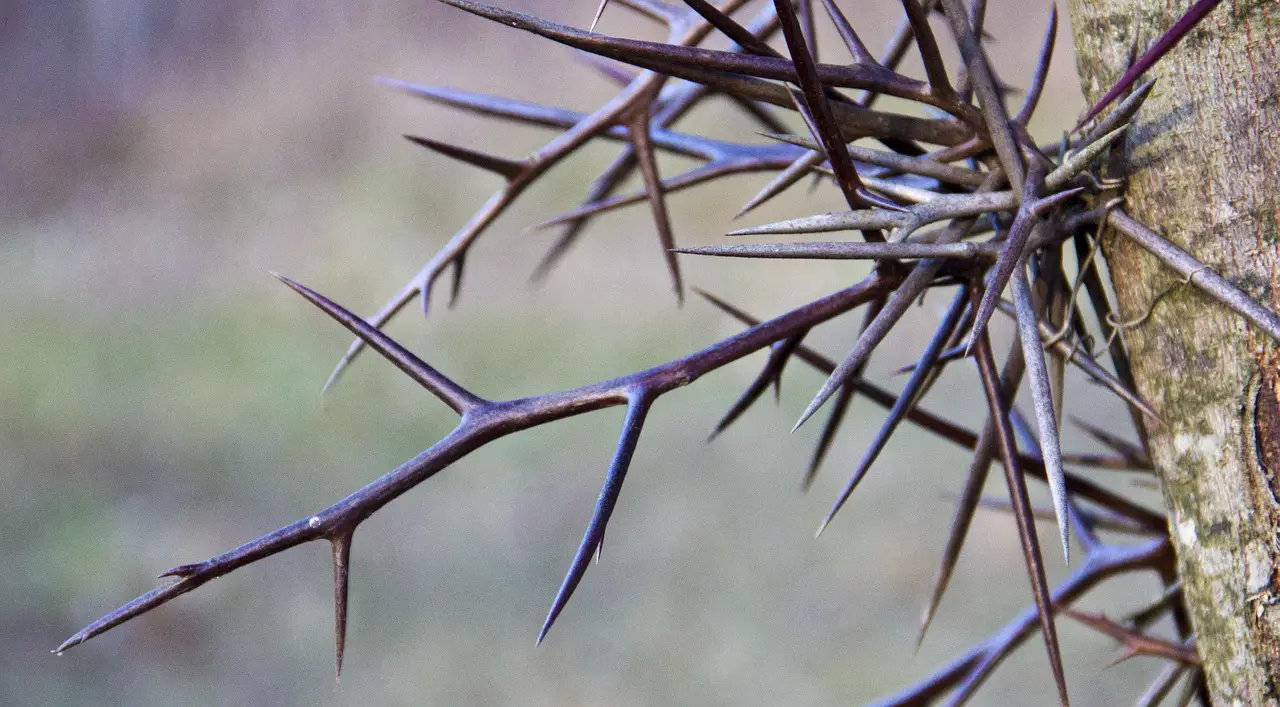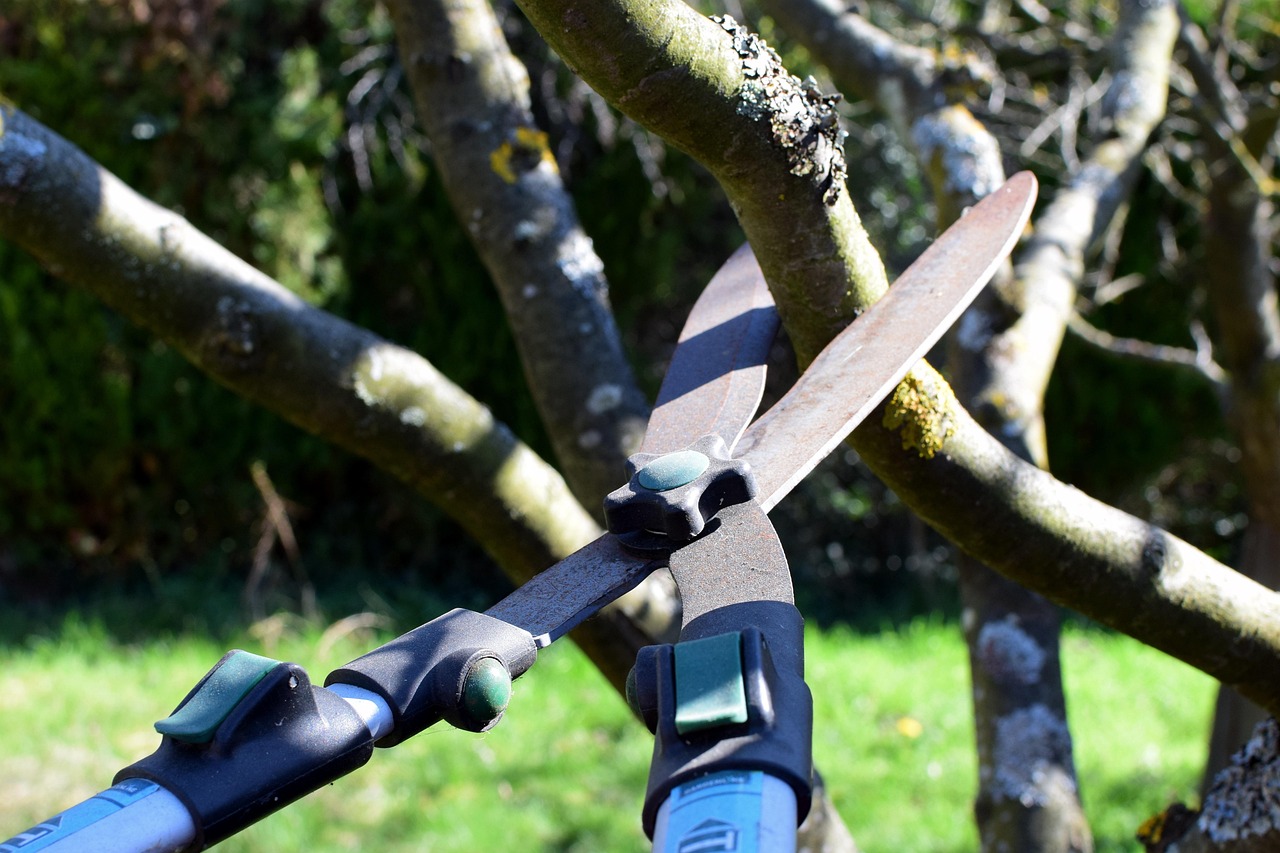Locust tree pruning is essential for promoting healthy growth, enhancing landscape aesthetics, and restoring ecosystems. Proper pruning techniques help manage the tree’s size, improve air circulation, and reduce disease risk, ultimately benefiting both the environment and surrounding flora.
Understanding Locust Trees
Locust trees, primarily belonging to the genus Robinia, are known for their resilience and adaptability. There are several species, including the black locust (Robinia pseudoacacia) and honey locust (Gleditsia triacanthos). These trees are often favored in landscaping due to their beautiful foliage, fragrant flowers, and ability to thrive in various soil conditions.

Locust trees are particularly valued for their ecological benefits. They fix nitrogen in the soil, improving fertility and supporting the growth of surrounding plants. Their dense canopy provides shade and habitat for various wildlife, making them an integral part of many ecosystems.
Benefits of Pruning Locust Trees
Pruning locust trees offers numerous advantages. These benefits include:
- Improved Health: Regular pruning helps remove dead or diseased branches. This action reduces the risk of pests and diseases spreading through the tree.
- Enhanced Growth: Proper pruning encourages new growth, ensuring the tree remains vibrant and strong.
- Aesthetic Appeal: A well-pruned locust tree enhances the beauty of a landscape, providing a more appealing form and structure.
- Increased Airflow: Pruning allows better air circulation within the canopy, reducing humidity levels that can lead to fungal infections.
When to Prune Locust Trees
The best time to prune locust trees is during late winter or early spring. At this time, the trees are still dormant, which minimizes stress and trauma from cutting. It also allows for better visibility of the tree’s structure, making it easier to identify branches that require attention.

Pruning during the growing season can lead to excessive sap bleeding in some species, which may weaken the tree. Thus, adhering to the late winter or early spring schedule is crucial for optimal health.
Pruning Techniques
Effective pruning techniques can significantly impact the overall health and appearance of locust trees. Here are some key methods to consider:
- Thinning: This technique involves removing select branches to improve light penetration and air circulation. Thinning helps maintain a balanced structure without altering the tree’s natural shape.
- Heading Cuts: Heading cuts involve trimming back branches to a node or bud. This method controls growth while promoting denser foliage in the desired areas.
- Reduction Cuts: Reduction cuts are made to reduce the length of a branch while maintaining its natural shape. This approach is particularly useful for managing height and spread.
- Cleaning: This involves removing dead, damaged, or diseased branches. Regular cleaning is essential for maintaining tree health.
Tools for Pruning
Having the right tools is essential for effective pruning. Here are some commonly used tools:

| Tool | Description |
|---|---|
| Bypass Pruners | Ideal for cutting small branches up to ¾ inch in diameter. They provide a clean cut without crushing the plant tissue. |
| Loppers | A larger version of pruners, loppers can cut branches up to 2 inches thick. They are perfect for reaching higher areas. |
| Saw | A pruning saw helps remove larger branches that cannot be cut with pruners or loppers. |
| Hand Shears | These are used for precise cuts on smaller branches or delicate foliage. |
Using sharp tools is crucial for making clean cuts. Dull tools can damage branches and create entry points for disease. Regular maintenance of pruning tools extends their lifespan and ensures efficient performance.
Potential Risks of Improper Pruning
While pruning is beneficial, improper techniques can harm locust trees. Some potential risks include:
- Tree Stress: Over-pruning can lead to stress, making trees more susceptible to diseases and pests.
- Unnatural Growth: Incorrect cuts can alter the natural shape of the tree, leading to weak growth patterns.
- Increased Vulnerability: Poor pruning practices may expose trees to environmental stressors, such as extreme weather and pests.
Caring for locust trees through proper pruning practices not only supports their health but also enhances their role in landscape design and ecosystem restoration. The next sections will delve deeper into specific pruning strategies and their impact on local environments.

Pruning Strategies for Locust Trees
Implementing effective pruning strategies is crucial for maximizing the benefits of locust trees in landscaping and ecosystem restoration. Different approaches can be adopted depending on the specific goals of pruning, tree health, and environmental factors. This section outlines various strategies for successful locust tree pruning.
Selective Pruning
Selective pruning focuses on removing specific branches while preserving the overall shape and structure of the tree. This method promotes healthy growth and minimizes stress. Key aspects of selective pruning include:
- Identifying Target Branches: Look for branches that are dead, diseased, or crossing over one another. These should be prioritized for removal.
- Maintaining Balance: Remove branches in a way that maintains a balanced canopy. Avoid removing too many branches from one side, as this can cause the tree to lean.
- Creating Space: Ensure that there is adequate space between branches to allow sunlight to penetrate and improve air circulation.
Formative Pruning
Formative pruning is especially important for young locust trees. It helps shape their growth and encourages strong structural development. This technique is best applied in the early years of a tree’s life, focusing on:
- Establishing a Central Leader: Encourage a single main trunk to develop by removing competing leaders. This promotes strength and stability.
- Removing Competing Branches: Identify and prune back any branches that compete with the main trunk or other primary branches.
- Encouraging Healthy Growth: Prune to promote upward growth rather than lateral spread, creating a strong framework for future growth.
Maintenance Pruning
Maintenance pruning is conducted on established locust trees to ensure continued health and aesthetics. This type of pruning should be performed regularly and includes:
- Annual Checks: Inspect the tree every year for any signs of disease or damage. Early detection allows for timely intervention.
- Cleansing Cuts: Regularly remove any dead or damaged wood to maintain tree health.
- Reducing Size: Control the size of the tree if it is encroaching on structures or power lines without compromising its health.
The Role of Pruning in Ecosystem Restoration
Pruning locust trees plays a significant role in ecosystem restoration. Through careful management, these trees can contribute to biodiversity, soil health, and habitat restoration. Here are some ways pruning supports ecological goals:
Biodiversity Enhancement
Healthy locust trees provide essential habitat and food sources for various wildlife species. Pruning can enhance biodiversity by:
- Creating Habitat: By maintaining a diverse canopy structure, pruned trees can support various birds and insects that rely on different tree heights.
- Encouraging Understory Growth: Improved light penetration through thinning allows for more flora to thrive beneath the tree, increasing overall biodiversity.
Soil Health Improvement
The roots of locust trees play a vital role in enriching soil health. Pruning helps maintain soil ecosystems by:
- Nitrogen Fixation: Healthy locust trees effectively fix nitrogen, which enhances soil fertility for surrounding plants.
- Organic Matter Contribution: When pruned branches decompose, they add organic matter back into the soil, improving its structure and nutrient content.
Restoration of Native Habitats
In areas where locust trees are native, pruning helps restore natural habitats by:
- Controlling Invasive Species: Pruning helps manage locust populations and prevents them from overtaking other native species.
- Promoting Native Flora: By allowing more light to reach the forest floor, pruned locust trees can support the growth of native plants that might otherwise struggle.
Sustainable Practices in Locust Tree Pruning
Sustainability should be at the forefront of any pruning strategy. Implementing sustainable practices ensures that locust trees continue to thrive and contribute positively to their environment. Here are some sustainable pruning practices to consider:
Timing and Frequency
Understanding when and how often to prune is essential for sustaining tree health. Sustainable practices include:
- Avoiding Over-Pruning: Limit pruning to what is necessary to maintain health and aesthetics. Aim for no more than 25% removal of the canopy in a single year.
- Seasonal Awareness: Prune during dormancy to minimize stress on the tree and reduce sap loss.
Minimizing Waste
Efficient waste management is critical in sustainable practices. Consider the following approaches:
- Mulching: Shred pruned branches and leaves to create mulch. This not only reduces waste but also benefits soil health when applied around the base of plants.
- Composting: Utilize pruned material in compost piles to recycle nutrients back into the ecosystem.
By incorporating these strategies into locust tree pruning practices, individuals can contribute to healthier landscapes and ecosystems while promoting sustainability and resilience within their environments.
Common Challenges in Locust Tree Pruning
While pruning locust trees is beneficial, it can present various challenges. Understanding these challenges can help tree care professionals and homeowners effectively address them. This section outlines some common issues faced during locust tree pruning and how to overcome them.
Identifying Tree Health Issues
Before initiating any pruning, it is crucial to assess the overall health of the locust tree. Some common health issues include:
- Disease: Locust trees can be susceptible to diseases such as locust borer and fungal infections. Identifying these issues early allows for more effective management.
- Pest Infestation: Insects such as the locust leaf miner can weaken trees. Look for signs of infestation, like discolored leaves or visible pests.
- Environmental Stress: Factors such as drought or poor soil quality can affect tree health. Proper assessment helps in determining the best pruning practices.
Timing Conflicts
Choosing the right time for pruning can be challenging. Several factors influence timing, including weather conditions and local climate. Here are key considerations:
- Seasonal Variability: Weather conditions can vary significantly from year to year. Ensure that pruning is conducted during the appropriate season based on local climate.
- Tree Growth Cycles: Understanding the growth cycle of locust trees is vital. Pruning at the wrong time can hinder growth and development.
Accessing Hard-to-Reach Areas
Locust trees often grow tall and wide, making it difficult to access certain branches. To manage these challenges, consider the following techniques:
- Using Ladders Safely: When using ladders, ensure they are stable and positioned correctly to avoid accidents. Always have a partner nearby for safety.
- Employing Climbing Gear: For professional arborists, using climbing gear can provide safe access to higher branches without compromising safety.
- Using Extension Tools: Tools such as pole saws and pruners can help reach higher branches without the need for ladders.
The Impact of Pruning on Locust Tree Growth
Pruning has a significant impact on the growth and development of locust trees. Understanding these effects can help guide effective pruning practices. This section discusses how pruning influences tree growth.
Promoting Healthy Foliage
Pruning encourages healthy foliage development by enhancing light penetration and airflow within the canopy. Benefits include:
- Improved Photosynthesis: More light reaching the leaves can enhance photosynthesis, leading to stronger and healthier foliage.
- Reduced Disease Risk: Well-pruned trees have better air circulation, reducing humidity levels that promote fungal growth.
Encouraging Structural Integrity
Pruning plays a vital role in developing a strong structure within locust trees. Key considerations include:
- Strengthening Branch Development: Selective pruning helps shape branch growth to ensure a sturdy framework that can withstand wind and storms.
- Reducing Weight on Weak Points: By removing excess weight from weak branches, pruning reduces the risk of breakage during adverse weather conditions.
Tools and Techniques for Effective Pruning
The right tools and techniques are essential for successful locust tree pruning. Utilizing appropriate tools ensures clean cuts and minimizes damage to the tree. This section outlines various tools and their uses.
Essential Pruning Tools
Selecting the correct tools is crucial for effective pruning. Commonly used tools include:
| Tool | Description |
|---|---|
| Bypass Loppers | These are ideal for cutting larger branches (up to 2 inches) with precision and minimal damage. |
| Saw (Pruning Saw) | A specialized saw designed to cut thicker branches safely and efficiently. |
| Pole Pruner | This tool allows for cutting high branches without climbing, extending your reach significantly. |
| Hand Pruners | Perfect for smaller cuts on delicate branches and leaves, ensuring precision in pruning. |
Pruning Techniques for Optimal Results
The technique used during pruning affects the tree’s recovery and growth. Important techniques to consider include:
- Cuts at an Angle: Make cuts at a 45-degree angle to promote faster healing and reduce water accumulation on cut surfaces.
- Avoiding Flush Cuts: Do not cut branches too close to the trunk, as this can damage the tree’s natural barriers against disease.
- Following the 1/3 Rule: When reducing a branch’s length, avoid cutting more than one-third of its total length in a single year to minimize stress on the tree.
Implementing proper tools and techniques ensures successful pruning outcomes, contributing to healthier locust trees and their crucial role in landscapes and ecosystems. As we explore further, we will examine specific case studies demonstrating successful locust tree pruning practices in real-world scenarios.
Case Studies in Locust Tree Pruning
Understanding practical applications of locust tree pruning can provide valuable insights into effective techniques and outcomes. Below are examples of successful pruning practices implemented in various regions, highlighting the benefits for both landscapes and ecosystems.
Case Study 1: Urban Park Restoration
In an urban park located in the Midwest, a community initiative focused on restoring a declining locust tree population. Over the course of three years, the following strategies were employed:
- Selective Thinning: The pruning team removed approximately 20% of the canopy each year, focusing on dead and diseased branches. This action improved airflow and light penetration.
- Community Involvement: Volunteers were trained in proper pruning techniques, fostering community engagement and awareness about tree health.
- Monitoring Growth: After three years, tree health assessments indicated a significant increase in foliage density and overall vitality.
This case study demonstrates how community involvement and selective pruning can revitalize urban ecosystems, creating a healthier environment for both trees and park visitors.
Case Study 2: Agricultural Land Integration
On agricultural land in the Southern United States, locust trees were pruned to serve a dual purpose: providing shade for livestock and improving soil quality. Key practices included:
- Formative Pruning: Young locust trees were pruned to establish strong central leaders, enhancing their structural integrity.
- Controlled Canopy Size: Pruning was conducted every two years to maintain an optimal canopy size that allowed sunlight to reach pasture grass while providing adequate shade for cattle.
- Nitrogen Fixation: The presence of healthy locust trees contributed to improved soil nitrogen levels, benefiting crop yields.
This case study illustrates the integration of locust trees into agricultural practices, showcasing their potential to enhance both animal welfare and soil health.
Case Study 3: Ecological Restoration Project
An ecological restoration project in a former mining site in the Northeast aimed to reestablish native plant communities. Pruning strategies for existing locust trees included:
- Invasive Species Management: Regular pruning helped control locust growth and prevent them from overshadowing native plants.
- Encouraging Biodiversity: By selectively thinning locust trees, the project opened up the canopy for understory plants, allowing diverse flora to flourish.
- Wildlife Habitat Enhancement: The improved habitat supported various bird species and pollinators, contributing to a more balanced ecosystem.
This case study highlights how effective pruning can facilitate ecological restoration efforts, promoting biodiversity and wildlife habitat recovery.
Final Thoughts
The practice of pruning locust trees is essential not only for enhancing their health and beauty but also for supporting broader environmental goals. Through careful management, locust trees can play a vital role in landscape aesthetics and ecosystem restoration.
Key takeaways from this discussion include:
- Importance of Timing: Pruning during the appropriate season is crucial for minimizing stress on the tree.
- Sustainable Practices: Implementing sustainable pruning practices can lead to healthier trees while minimizing waste and promoting soil health.
- Community Engagement: Involving local communities in tree care fosters awareness and appreciation of the ecological benefits provided by healthy locust trees.
- Practical Applications: Real-world case studies illustrate the diverse benefits of locust tree pruning across urban, agricultural, and ecological contexts.
By embracing effective pruning techniques and sustainable practices, individuals and communities can contribute to healthier landscapes and vibrant ecosystems. As we move forward, it is essential to continue sharing knowledge and experiences to promote better tree management practices that benefit both people and the environment.
